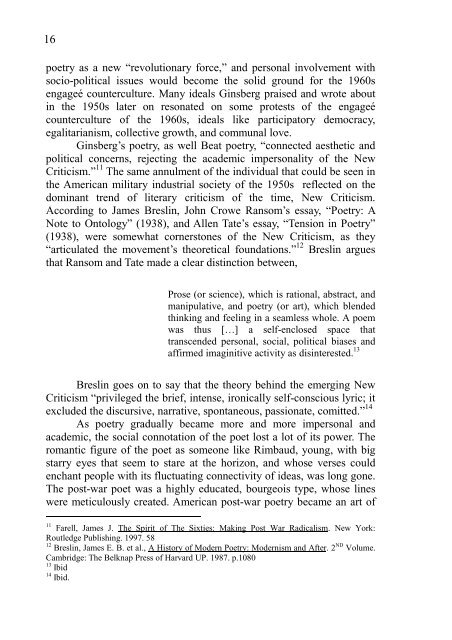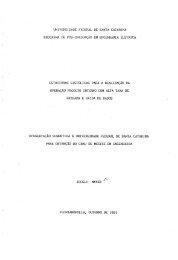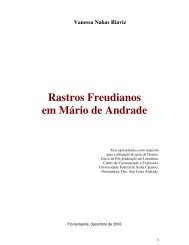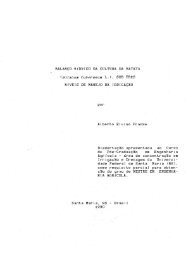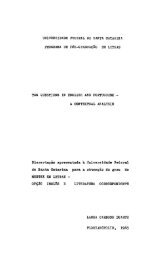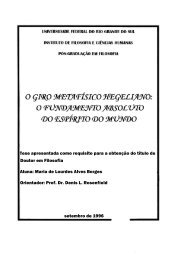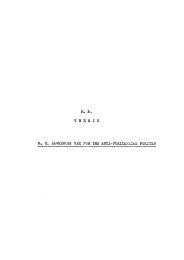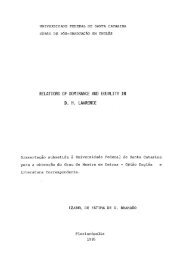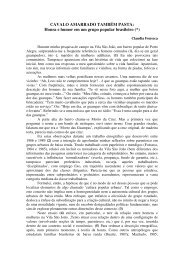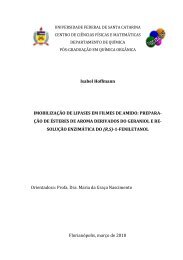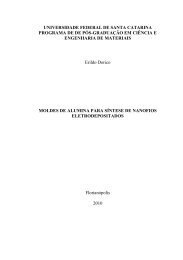Tropical ginsberg
Tropical ginsberg
Tropical ginsberg
You also want an ePaper? Increase the reach of your titles
YUMPU automatically turns print PDFs into web optimized ePapers that Google loves.
16<br />
poetry as a new “revolutionary force,” and personal involvement with<br />
socio-political issues would become the solid ground for the 1960s<br />
engageé counterculture. Many ideals Ginsberg praised and wrote about<br />
in the 1950s later on resonated on some protests of the engageé<br />
counterculture of the 1960s, ideals like participatory democracy,<br />
egalitarianism, collective growth, and communal love.<br />
Ginsberg’s poetry, as well Beat poetry, “connected aesthetic and<br />
political concerns, rejecting the academic impersonality of the New<br />
Criticism.” 11 The same annulment of the individual that could be seen in<br />
the American military industrial society of the 1950s reflected on the<br />
dominant trend of literary criticism of the time, New Criticism.<br />
According to James Breslin, John Crowe Ransom’s essay, “Poetry: A<br />
Note to Ontology” (1938), and Allen Tate’s essay, “Tension in Poetry”<br />
(1938), were somewhat cornerstones of the New Criticism, as they<br />
“articulated the movement’s theoretical foundations.” 12 Breslin argues<br />
that Ransom and Tate made a clear distinction between,<br />
Prose (or science), which is rational, abstract, and<br />
manipulative, and poetry (or art), which blended<br />
thinking and feeling in a seamless whole. A poem<br />
was thus […] a self-enclosed space that<br />
transcended personal, social, political biases and<br />
affirmed imaginitive activity as disinterested. 13<br />
Breslin goes on to say that the theory behind the emerging New<br />
Criticism “privileged the brief, intense, ironically self-conscious lyric; it<br />
excluded the discursive, narrative, spontaneous, passionate, comitted.” 14<br />
As poetry gradually became more and more impersonal and<br />
academic, the social connotation of the poet lost a lot of its power. The<br />
romantic figure of the poet as someone like Rimbaud, young, with big<br />
starry eyes that seem to stare at the horizon, and whose verses could<br />
enchant people with its fluctuating connectivity of ideas, was long gone.<br />
The post-war poet was a highly educated, bourgeois type, whose lines<br />
were meticulously created. American post-war poetry became an art of<br />
11<br />
Farell, James J. The Spirit of The Sixties: Making Post War Radicalism. New York:<br />
Routledge Publishing. 1997. 58<br />
12 ND<br />
Breslin, James E. B. et al., A History of Modern Poetry: Modernism and After. 2 Volume.<br />
Cambridge: The Belknap Press of Harvard UP. 1987. p.1080<br />
13<br />
Ibid<br />
14 Ibid.


